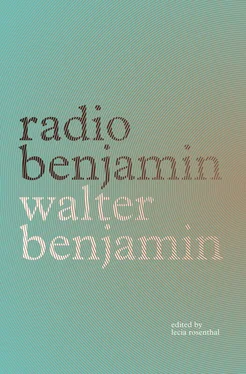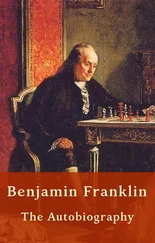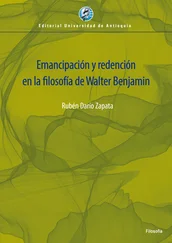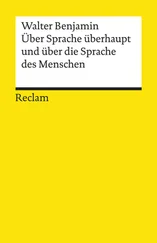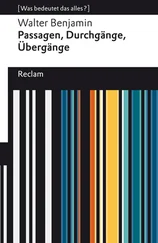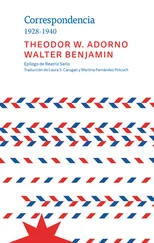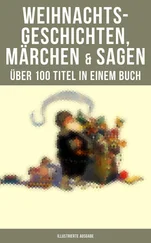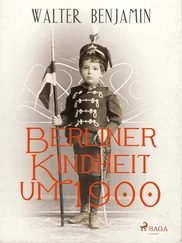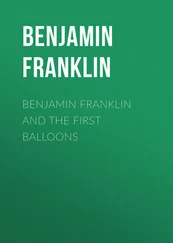29 The Correspondence of Walter Benjamin , 404. As his comments suggest, Much Ado About Kasper is, with its provisions for various interventions of sound, noise, and audio-signaling, perhaps Benjamin’s most radiophonically charged and formally challenging piece.
30Letter to Scholem of July 26, 1932, in The Correspondence of Walter Benjamin , 395. For the effects on radio of the Papen government’s coup, including the firing of Hans Flesch as director of the Berlin Radio Hour, see Jelavich, Berlin Alexanderplatz , 241.
31Benjamin, postcard quoted by Scholem in Story of a Friendship , 239.
32Benjamin broadcast the radio version of “Berliner Kindheit um 1900” on January 29, 1933, from 6:55 to 7:20 pm. On this broadcast, see Schiller-Lerg, Walter Benjamin und der Rundfunk , 302–3 and 104–7. In their discussion of the complex composition and publication history of Berlin Childhood Around 1900 , the editors of the GS do not mention the piece’s radio past (GS, 4.2, 964–70; and GS, 6, 797–9, and GS, 7.2, 691–4). Unfortunately, no typescript of the broadcast survives, and it is not possible to know what selections Benjamin read. He had composed “A Berlin Chronicle” during the first half of 1932, and, during the second half of that year, had started to work on Berlin Childhood. The first selections from Berlin Childhood appeared in print, under pseudonym, in the Frankfurter Zeitung in February and March 1933 (see editors’ notes in GS, 4.2, 966, and “Chronology,” in Walter Benjamin, Selected Writings , vol. 2, 1927–1934, trans. Rodney Livingstone et al., eds. Michael W. Jennings, Howard Eiland, and Gary Smith [Cambridge, MA: Harvard University Press, 1999], 848, hereafter cited as SW; see also The Correspondence of Walter Benjamin , 399–404). Thus, the radio reading would have been Benjamin’s earliest “publication” of the work.
33In a letter to Scholem of July 26, 1932, Benjamin writes of the “four books that mark off the real site of ruin or catastrophe, whose furthest boundary I am still unable to survey when I let my eyes wander over the next years of my life. They include the Pariser Passagen , the Gesammelte Essays zur Literatur , the Briefe , and a truly exceptional book about hashish” ( The Correspondence of Walter Benjamin , 396). Versions of segments of at least three of these projects were presented on the radio: from the material that became The Arcades Project , we can trace a link to “The Railway Disaster at the Firth of Tay” (see this volume, 171 n.1). The Briefe mentioned by Benjamin refers to the collection of German letters, with brief introductions and commentary, that ultimately became Deutsche Menschen , in GS, 4.1, 149–233 (“German Men and Women,” SW, 3, 167–235). Initially published under the pseudonym Detlef Holz from April 1931 to May 1932 in the Frankfurter Zeitung , the text was published in book form in 1936. The related radio piece is “Auf der Spur alter Briefe,” in GS, 4.2, 942–4 (“On the Trail of Old Letters,” SW, 2, 555–8). For the book on hashish, which was never published as such during Benjamin’s lifetime, the related radio broadcast is “Myslowitz — Braunschweig — Marseille: Die Geschichte eines Haschisch-Rausches,” in GS, 729–37 (“Myslovice — Braunschweig — Marseilles: The Story of a Hashish Trance,” in SW, 2, 386–93). The corresponding radio text is considered lost; what remains is the text published in Uhu in November 1930.
34For the figure of the “vanishing point” with reference to “The Work of Art in the Age of Its Mechanical Reproducibility,” see Benjamin’s letter to Horkheimer of October 16, 1935 ( The Correspondence of Walter Benjamin , 509).
35See Walter Benjamin, The Arcades Project [N2a3 and N3,1], trans. Howard Eiland and Kevin McLaughlin, (Cambridge, MA: Harvard University Press, 1999), 462–3.
36This definition of ekphrasis is from W. J. T. Mitchell, “Ekphrasis and the Other,” in Picture Theory , (Chicago: University of Chicago Press, 1994), 152. To Mitchell’s definition, I would add the “verbal and sound representation of visual representation,” particularly as radio interests itself in audio-signifiers that are not necessarily words (for instance, the “noises” Benjamin introduces in Much Ado About Kasper ). Beyond this, however, it is crucial not to presume a fixed understanding of the difference between the “verbal” and the “visual” as objects or modes of presentation. What, after all, is a “visual” object for, presented in the medium of radio? One of Mitchell’s key arguments is that we do not precisely understand this difference, or the relationship of “otherness” between text and image, especially in relation to the status of speech acts, which are “not medium-specific” and “not ‘proper’ to some medium or other” (160).
37“Only dialectical images are genuine images (that is, not archaic); and the place where one encounters them is language” ( The Arcades Project [N2,3], 462).
38Benjamin makes note of the psychoanalytic expansion of “our field of perception,” comparing Freud’s publication of On the Psychopathology of Everyday Life , with its emphasis on paying attention to slips of the tongue, with cinema’s “deepening of apperception throughout the entire spectrum of optical — and now also auditory — impressions” (“The Work of Art,” SW 4, 265). For the phrase “hearing-matter,” see “The Work of Art,” 278 n. 29, where Benjamin cites Aldous Huxley’s disparaging commentary on the proliferation of “trash in the total artistic output” of contemporary culture, an explosive, technologically-enabled multiplication of material that includes not only more “reading- and seeing-matter” but also more “hearing-matter.”
39Adorno, known for his negative assessment of radio and the culture industry, takes up this very problem of analyzing a shift in audio-aura, using Benjamin’s essay as a launching point.
40In “Street Trade and Markets in Old and New Berlin,” when Benjamin refers specifically to the heard artifact and the specificity of everyday, spoken language, he does not attempt to reproduce the ambient soundscape. Rather, his source is the literature of Adolf Glassbrenner, who permits Benjamin to illustrate his point that the market hall is “as rich and sumptuous for the ear as the image of the market is a feast for the eyes” (11). Benjamin makes similar use of Glassbrenner in “Berlin Dialect” and “Theodor Hosemann,” where citations of his work provide something like narrative “images” of an everyday vernacular. In “Theodor Hosemann,” Benjamin addresses the problem of radio ekphrasis directly, asking “Is it not a crazy idea to talk about a painter on the radio? — It’s out of the question, of course, that I stand here and describe Hosemann’s pictures to you,” and finally concludes that Glassbrenner’s text, as a substitute for the otherwise unpresentable visual object text, has allowed him to present the “speaking” character of a typical Berliner “instead of the drawn version” (69). In other words, if the visual image resists presentation over the radio, a written substitute, featuring not only dialogue but the ever-changing, “living” speech act of a typical Berlin type, can be reproduced through the speaker’s citation of that written text. For the problem of “ekphrastic indifference,” or the stage of fascination with ekphrasis corresponding to the “commonsense perception that ekphrasis is impossible … A verbal presentation cannot represent — that is, make present — its object in the same way a visual presentation can,” see Mitchell, Picture Theory , 152.
Читать дальше
